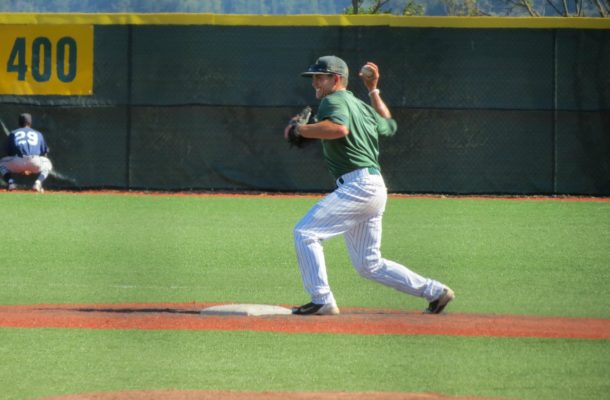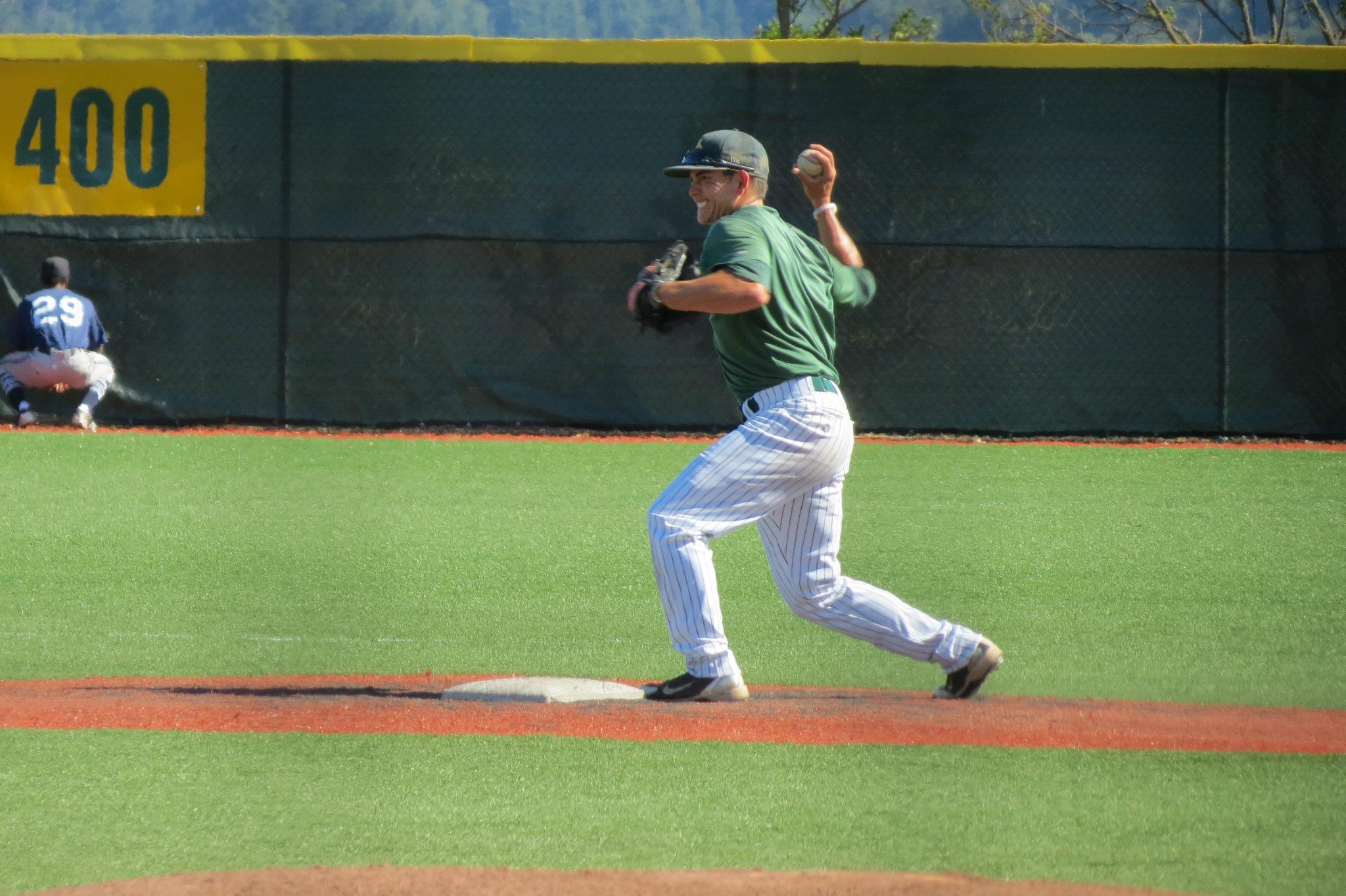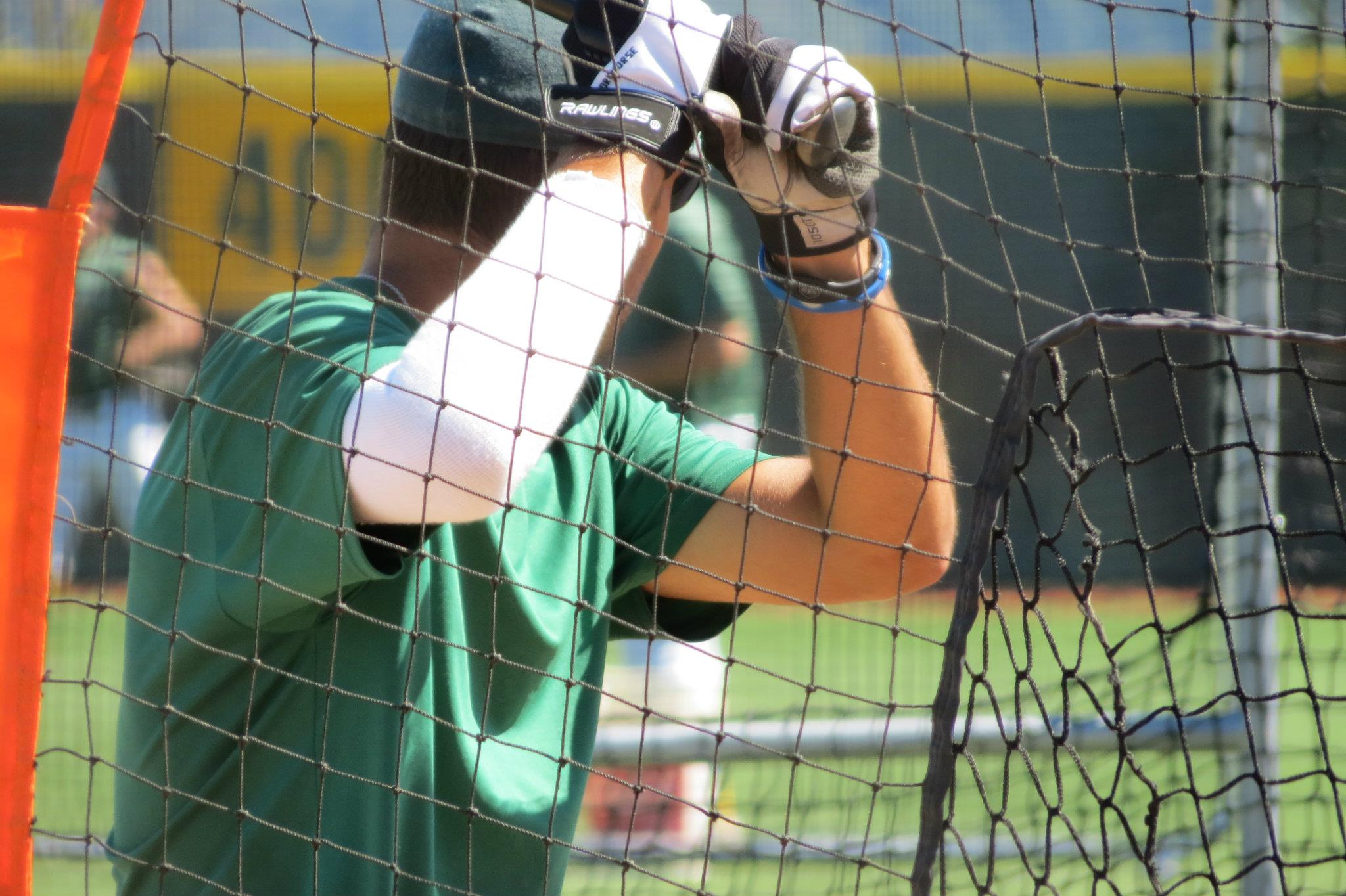3 Ways to Help Your Child Focus on the Field


Instagram and Snapchat notifications, video games, texts, emails, homework… we are constantly being pulled away from the present moment to check our phones!
Could all of this screen time impact kids ability to focus when NOT on the screen? What about the impact on focus while playing sports or participating in other offline activities?
Turns out that over time, constantly checking one’s phone throughout the day and spending time playing stimulating video games, can erode at one’s ability to focus while not using screens.
Gloria Mark, a researcher at UC Irvine did a large study on interruptions and distractions. Her results concluded that those who tend to receive more notifications and check their phone more will have a greater tendency to self-interrupt more often. In other words, if my starting pitcher is ultra-active on his phone, sending and receiving hundreds of messages throughout the day, his brain becomes wired in a way that leaves him less capable of presence, calm and focus.
I have developed 3 strategies which I implement with my teams and players which are scientifically proven to increase focus and improve performance on the field. These 3 strategies are utilized by most professional athletes and even many high performing CEO’s and executives:
- Developing a focus ritual or routine (before the pitch, big test, important presentation)
- Creating a personal power phrase (having it visible during big moments)
- Visualizing success with breathing and meditation (no, your child is never too young…)
You can imagine how this would affect a starting pitcher when he’s on the mound with the game on the line and needs to be dialed in to every detail: how many runners are on base, picking up signs, what this batter has seen already. If he can’t concentrate at this level because his mind is wired to be scattered, he will not be performing at the highest possible level (he is not in a “flow state!”)
If you asked a basketball player to shoot 15 free throws in a row using the new shooting form they were just working on with coach, our distracted athletes of today are more likely to resort to old habits and forget what they were working on just moments ago. I have witnessed this firsthand working with athletes locally year round…
What about their ability to focus during an SAT test? I’ll let you draw your own conclusions…
But, have no fear! Strategies are here!

I typically offer these strategies in a team setting so the activities below were written to help coaches execute with their teams. However this can, and should be modified for usage at home with your children. Athletes NEED routines, rituals and tools for focus during competition! Really before any big moments – a test, presentation, interview… All of these strategies help one get into a peak mindset!
Activity or Focus: Developing a Focus Rituals or Routine
Premise: Developing focal points, habits, routines and/or rituals before big games or important moments can build confidence, improve performance and reduce anxiety. Watch a NBA basketball player before he shoots his free throws. He will execute the same routine every single time. This builds confidence and creates consistency as this is makes the athlete feel comfortable as he has done the same routine and same shot hundreds of thousands of times.
Environment: Team practice, Home
Group size: Any.
Time Needed: 5-15 minutes.
Primary Purpose: The kids will write down their rituals on a flash card and will share them with their coaches and teammates. To guide your kids to develop healthy rituals in order to remain present improve performance. This exercise informs coaches, parents and educators what their habits are so they can be held accountable.
Skills Gained or Practiced: Stress relief, confidence building, personal discovery, formation of healthy habits
Execution:
- Inform your kids that you are going to have them write down and share their habits and rituals which prime them to play at their best.
- For those who do not have a ritual or routine you can offer a template and some examples
- You may elect to give them a day or two to think about their own rituals or routines so they can put in some solid thought.
- Have them write down their routine on a flash card before practice
- Have them share it with their teammates
- Incorporate it into your practice plan. For example: before stepping in the box before hitting batting practice, they MUST go through their routine (or they lose their round for not preparing mentally)
Tips & Lessons:
A great template for a routine can include but is not limited to the following steps:
A visual focal point
Essentially the start of their routine and grounds their practice. The focal point should be something that is present in every practice/game setting. Examples include: The top of the foul pole, the endzone pileon, your shoe laces, a wristband, the square in the backboard
A deep breathe
Breathing should be a staple of any routine. A deep breathe offers a variety of physiological benefits including:
- More oxygen to the brain
- Lower cortisol levels
It is important this is a DEEP breathe and not a shallow breathe. Ensure you finish the breathe before moving on.
A positive Affirmation
Something you say to yourself that gives you confidence. This personal statement should be something you WILL do and not something your do not want to happen.
- Quality examples of positive affirmations
- You got this!
- See it. Hit it.
- Nobody can touch me.
- I am the greatest.
- Relax and have fun.
- No fear!
- Bad examples of positive affirmations
- Don’t swing at the high pitch
- Don’t strike out
- Don’t airball
- Don’t mess this up
- Don’t throw an interception
Rituals can and should be used:
- Baseball hitters: Between pitches while hitting or before an at-bat.
- Baseball pitchers: Between pitches while pitching or before you go into a game
- Basketball: At the free throw line or before you go in the game
- Soccer: Before a penalty kick or before the game
- Football: In between plays. Before kicking a field goal. Before the game
As a coach, you should be aware of ALL of your players routines. As a parent, you can tell if your child is locked in during competition if they are executing their routine.
Activity or Focus: Personal Power Phrase
Premise: Developing a personal mantra, or power phrase and write it in the brim of your cap, on your shoes, in your locker, inside your gloves… This mantra is similar to your routine but is simpler as it reminds you of your #1 goal while competing
Environment: Team practice, Home
Group size: Any.
Time Needed: 5-15 minutes.
Primary Purpose: To guide your kids to have a purpose and focus when practicing and competing.
Skills Gained or Practiced: Stress relief, confidence building, personal discovery, formation of healthy habits, introspection
Execution:
- Inform your kids that you are going to have them write down and share a personal power phrase
- For baseball/softball players, the place to write this is inside their brim of their caps or on the back of their gloves
- For basketball players, this could be inside their shoes
- For football players, this could be in their lockers or helmets
- For hockey/lacrosse players, this could be written on tape on their sticks
- Bring a bunch of sharpies to practice and explain the importance of knowing your purpose and your goal when on the field. These mantras can also be used as reminders which can help during stressful times on the field
- Have them write down their mantra in the appropriate area and share with the team why you chose it
Tips & Lessons:
- Some examples:
- Trust the Process
- Enjoy the journey
- Breathe
- Relax & Have Fun
- Process over Product
- Trust Your Preparation
- You Got This
- Nobody Better
Activity or Focus: Meditation or Visualization
Premise: Having your kids meditate to clear their minds and relax can help build mindfulness muscle and block distractions. Visualization of competitive situations before they occur improves confidence as it emulates stressful and important moments before they occur.
Environment: Team practice, before games, home, classroom, bed
Group size: Any.
Time Needed: 5-20 minutes.
Primary Purpose: To help your kids relax and experience success (and responding from failure) before the challenge occurs
Skills Gained or Practiced: Stress relief, confidence building, mindfulness, formation of healthy habits, imagination
Execution:
- Explain to your kids that your are going to facilitate a meditation or mindfulness session. Explain that many of the world\’s top athletes and teams utilize these practices regularly and they are proven to improve performance and reduce performance related anxiety.
- Have them lay down in any way which is comfortable and ask them cover/close their eyes and not talk
- Encourage them to challenge themselves and follow your cues. Explain to them this may be the only time of their day where they can just relax and be present without any worries about what has unfolded or what the future may hold
Tips & Lessons:
Template for meditation
- Acknowledgment of senses, specific sensations and weight of the body
- Bring attention to breathe
- Remain silent and allow them to pay attention to where the mind may go
- Remind your kids that it\’s okay to get lost in thought but gently bring attention back to breathe and present moment
- Ask them to take a few last long slow deep breaths and slowly wiggle their fingers and toes. Have them sit up and open their eyes in their own time
- Lastly, feel free to have a brief discussion about what unfolded for each of them. Encourage them to take this relaxed, calm, self aware state of mind with them throughout the rest of practice and remainder of their day
Template for visualization: (similar to meditation)
- Same process as meditation however after your have them bring attention to the breathe, paint a descriptive and highly detailed picture of a competitive scenario
- Detailed description of a baseball hitting scenario:
- Imagine you are on deck in the bottom of the 7th inning at our home field. You are staring down the pitcher and timing up your swing with his delivery. You hear the fans chattering and laughing in the background. You feel your sharp metal cleats dig and spin into the dirt underneath you. You feel the stickiness of your batting gloves up against the bat. The smells of burgers and dogs flipping at the concession stand. You are feeling confident and the ball appears as big as a beach ball. After your teammates draws a walk your name is called over the loudspeaker and you saunter up to the plate. You take a few relaxed practice swings before going through your pre-pitch. You dig into the box, back foot, front foot, tap the edge of plate. Twirl the bat a few times. You sink down into your stance as your glare down the pitcher. You cant hear anything. You are in the zone. Its you verse the pitcher. He comes set. Lifts his leg, reaches back and you see the ball right out of his hand coming towards you….
- Typically I will stop the guided visualization after the player steps into the box. However if this is the first time you have done this with your players they may need more help getting through the imagery.
- Imagine you are on deck in the bottom of the 7th inning at our home field. You are staring down the pitcher and timing up your swing with his delivery. You hear the fans chattering and laughing in the background. You feel your sharp metal cleats dig and spin into the dirt underneath you. You feel the stickiness of your batting gloves up against the bat. The smells of burgers and dogs flipping at the concession stand. You are feeling confident and the ball appears as big as a beach ball. After your teammates draws a walk your name is called over the loudspeaker and you saunter up to the plate. You take a few relaxed practice swings before going through your pre-pitch. You dig into the box, back foot, front foot, tap the edge of plate. Twirl the bat a few times. You sink down into your stance as your glare down the pitcher. You cant hear anything. You are in the zone. Its you verse the pitcher. He comes set. Lifts his leg, reaches back and you see the ball right out of his hand coming towards you….
- Encourage them to take 5-10 minutes before every game to visualize success. This can be done on the bench. In the outfield alone. The night before a game in bed. Whatever the player is comfortable with. That said, this is something which must be practiced and will improve performance if done religiously.
- You are going to have kids who are very uncomfortable with this. That is fine. Power through it. Explain to them why it is important to be able to be alone with yourself. You will see kids looking to each other to see who is doing it. Some may roll their eyes. (Initially this took me 2 years of doing this multiple times/week with my high schoolers before they all began to value it and eventually they started to request it)
- I find this works great at the start of a practice when you can feel your team is too squirly and needs to calm down. This also works great at the end of an intense practice.













